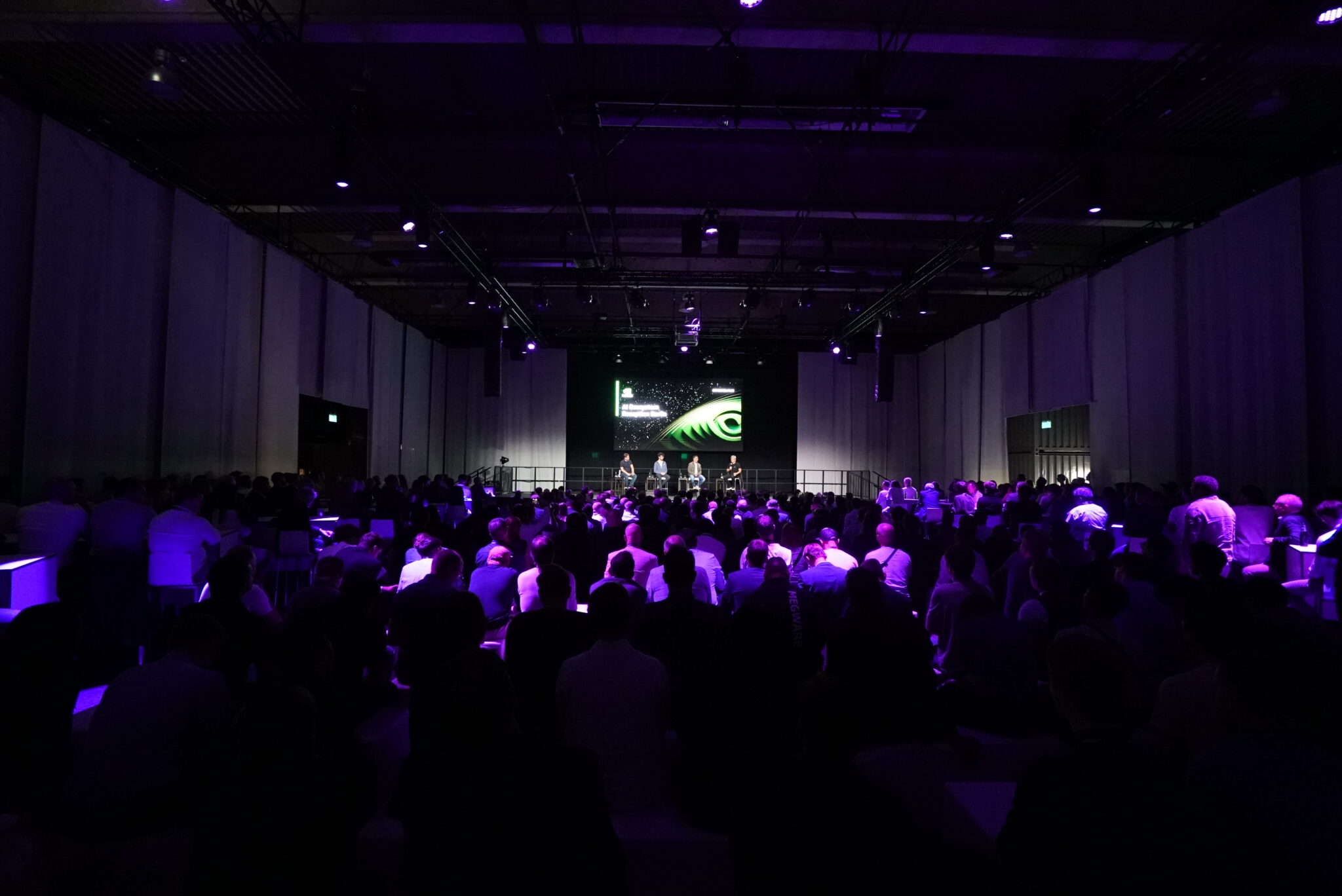Three leading European generative AI startups joined NVIDIA founder and CEO Jensen Huang this week to talk about the new era of computing.
More than 500 developers, researchers, entrepreneurs and executives from across Europe and further afield packed into the Spindler and Klatt, a sleek, riverside gathering spot in Berlin.
Huang started the reception by touching on the message he delivered Monday at the Berlin Summit for Earth Virtualization Engines (EVE), an international collaboration focused on climate science. He shared details of NVIDIA’s Earth-2 initiative and how accelerated computing, AI-augmented simulation and interactive digital twins drive climate science research.
Before sitting down for a fireside chat with the founders of the three startups, Huang introduced some “special guests” to the audience — four of the world’s leading climate modeling scientists, who he called the “unsung heroes” of saving the planet.
“These scientists have dedicated their careers to advancing climate science,” said Huang. “With the vision of EVE, they are the architects of the new era of climate science.”
Taking on Formidable Forces
“There is an enormous amount of AI startups in Germany, and I’m delighted to see it,” Huang said. “You’re in a brand-new computing era, and when that happens, everybody’s on square one.”
Huang welcomed to the stage the founders from Blackshark.ai, Magic and DeepL. Planetary management, artificial general intelligence, or AGI, and language translation are some ways the startups use generative AI.
- Blackshark.ai uses AI and hyperscaling distributed spatial computing to turn 2D images into data-rich 3D worlds.
- Magic is building an AGI software engineer, enabling small teams to write code significantly faster and more cheaply.
- DeepL aims to help everything communicate with everybody else with its AI-powered translation tool.
All three companies make solutions that could be seen as going up against products from established companies.

“Why did you take on such formidable forces?” Huang asked the founders.
Blackshark co-founder and CEO Michael Putz shared that the startup’s product is similar to what you might see in Google Earth.
But Blackshark claimed its coverage of the planet is 100%, compared to Google Earth’s 20%. And while Google might take a few months to update parts of its map, Blackshark only needs three days, Putz said.
Magic co-founder, CEO and AI lead Eric Steinberger explained how his company is trying to build an AGI AI software engineer that will work as though it were a team of humans.
He said it’ll remember conversations from months ago and can be messaged via an app like any other engineer. Rather than creating an alternative to existing solutions, Magic sees itself as trying to build something categorically different.
“It’s hard to build, but if we can get it right, we’re in an even playing field, even up against the giants,” said Steinberger.
DeepL founder and CEO Jaroslav Kutylowski said his company’s work was initially an intellectual challenge. “Could they do better than Google?” the team asked themselves. To Kutylowski, that sounded like fun.
Intuition, Efficiency and Resilience
Steinberger got a chuckle from the audience as he asked Huang about his decision-making process in driving NVIDIA forward. “You’re right, either always or almost always. How do you make those decisions before it’s obvious?”
“That’s a hard question,” Huang responded.
Huang talked about the intuition that comes from decision-making, saying, in his case, it comes from life and industrial experience. In NVIDIA’s case, he said it comes from having a lot of ideas “cooking” simultaneously.
He explained that with the invention of the GPU, the intention was never to replace the CPU but to make the GPU part of the next great computer by taking a full-stack approach.
With data centers and the cloud, Putz asked for advice on the best approach for startups when it comes to computing.
NVIDIA joined the “fabless semiconductor” industry, where there was very little capital required for a factory to funnel resources into R&D teams of 30-50 engineers instead of 500 like a more traditional semiconductor company.
Today, Huang explained, with the software 2.0 generation, startups can’t spend all their money on engineers — they need to save some to prototype and refine their software.
And it’s important to use the right tools to do the work for cost-efficient workloads. A CPU might be cheaper than a GPU per instance, but running a workload on a GPU will take “10x less time,” he said.
Kutylowski asked about the most significant challenges NVIDIA and Huang have faced along the company’s 30-year journey.
“I go into things with the attitude of, ‘How hard can it be? Well, it turns out it’s super hard,” Huang answered. “But if somebody else can do it, why can’t I?”
The answer includes the right attitude, self-confidence, the willingness to learn, and not setting an expectation of perfection from day one, he said. “Being resilient as you fail to the point where you eventually succeed — that’s when you learn,” Huang said.
